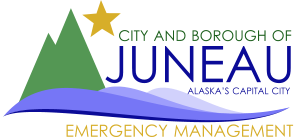Avalanche Advisory Archive Pre-2016
| Date Issued: | 2012-01-03 |
|---|---|
| Danger: | 2 |
| Trend: | 3 |
| Probability: | 3 |
| Size: | 2 |
| Problem: | 0 |
| Discussion: | The National Weather Service Forecasts- TODAY...CLOUDY. SNOW DEVELOPING IN THE AFTERNOON. SNOW TONIGHT...SNOW MIXING WITH RAIN LATE. SNOW ACCUMULATION 2 TO 3 INCHES. LOWS AROUND 29...RISING ABOVE FREEZING LATE. SOUTHEAST WIND 10 TO 20 MPH. WEDNESDAY...RAIN AND SNOW LIKELY IN THE MORNING...THEN RAIN... HEAVY AT TIMES IN THE AFTERNOON. SNOW ACCUMULATION UP TO 2 INCHES. SNOW LEVEL INCREASING TO 800 FEET IN THE AFTERNOON. HIGHS AROUND 36. SOUTHEAST WIND 15 TO 25 MPH. Last week and over the New Years weekend we received several small storms that finished in one fair sized storm. This storm brought over a foot of new snows during a time the temperatures climbed by 11f degrees. This warming trend during a storm places heavy wet snows on top of the looser lighter snows that were in place, creating a weakness in the snowpack. I can place a brick on top of a pop can... but when I put too many bricks on the can crushes... or if you step on it... it crushes... these are two examples of what can be the start of an avalanche. We have heavy snow on light snow... then we add more snow via new snow fall... wind... or by human triggers... when the stress exceeds the strength the snowpack fails. Over time these lower weak layers will stabilize, yet it can take a little time. Winds during the last week also add to the equasion. We built windslabs in isolated places that also add stress to the snowpack. With not much new snow over the last 2 days, cool temperatures, and low to moderate winds the avalanche danger is Moderate. Natural avalanches unlikely, potentially destructive avalanches unlikely to come near or reach developed areas. Human triggered avalanches are still possible. Later today into tomorrow we will start to see some new snow but the volumes remain low. Mid day tomorrow we will start to see some gentle warming and heavy precip. Avalanche danger will increase at that time. Please be careful in the backcountry today and recognize there are still weak layers in place. Avoid exposure to steep wide open terrain, especially convex slopes where the stress is greater. Choose safe lines with limited exposure. Ride from island of safety to island of safety one at a time with a spotter watching his partner. More trees and more anchors and less slope angle create somewhat safer slopes. Remember, Transceiver, Probe, and Shovel.. Dont leave home without them! Always ride with a well trained properly equiped partner as well. HAVE A GREAT DAY. |
| Tip: | A special thanks to the DOT for doing a great job in reducing avalanche danger along Thane Road yesterday before the next foot of new snow comes in tomorrow. They got 3 slides to reach road level. Those slieds filled in the berm well, yet DOT barely had to plow the road. That is the goal... They cannot afford to shoot every time it snows... so they watch danger levels on the road. Once they think there is snow that can hit the road they look for the opportunity to mitigate the dangers... If they wait too long the dangers increase and either by natural or man made avalanches they can bury the road. This causes lots of expense and labor. The timing was perfect to allow for road safety and minimize expense in the process. Special Thanks to DOT&PF for a job well done! We had slab avalanches on most every open slope. The largest breaking at nearly 10' deep in the biggest place. Most were in the 8-16\" range. |
